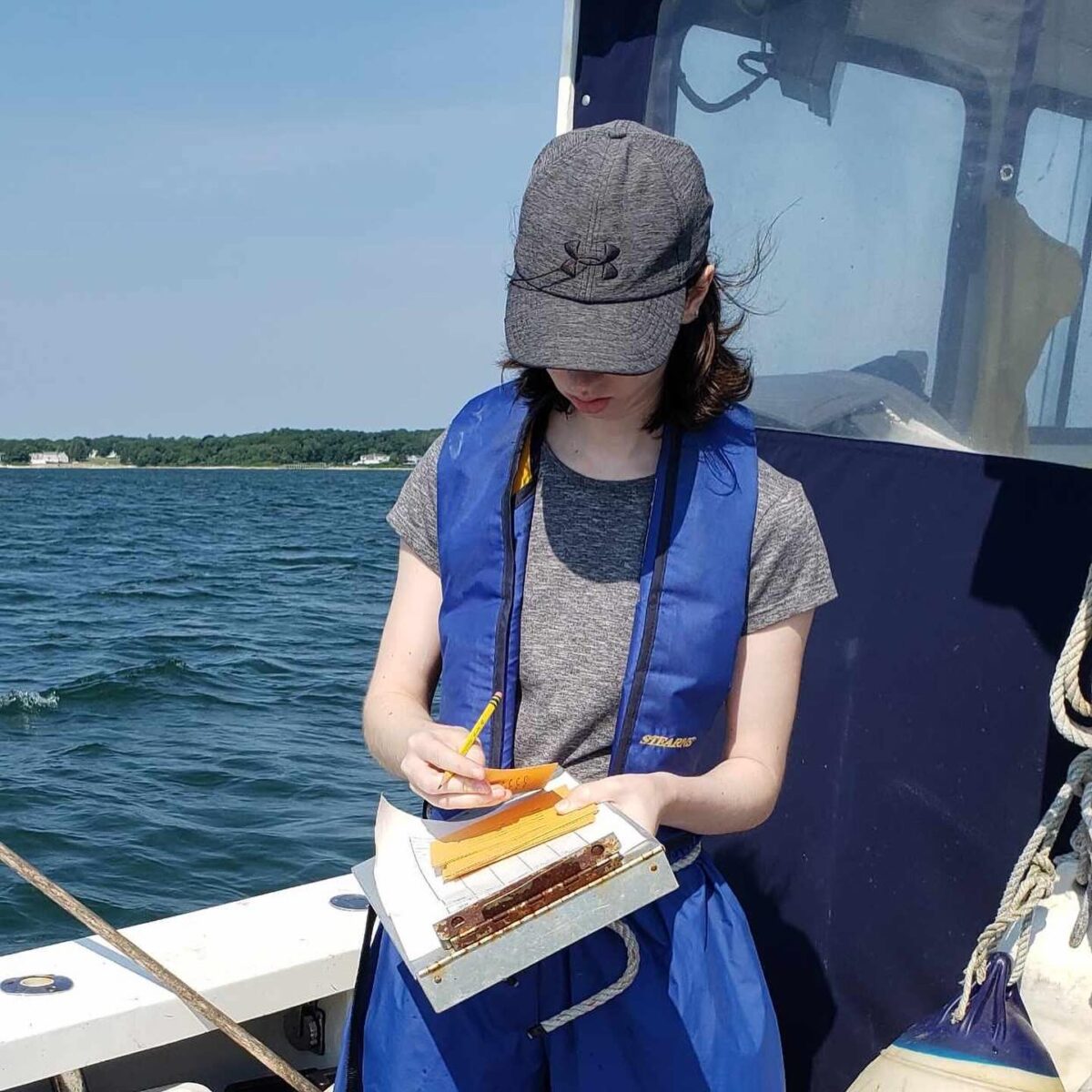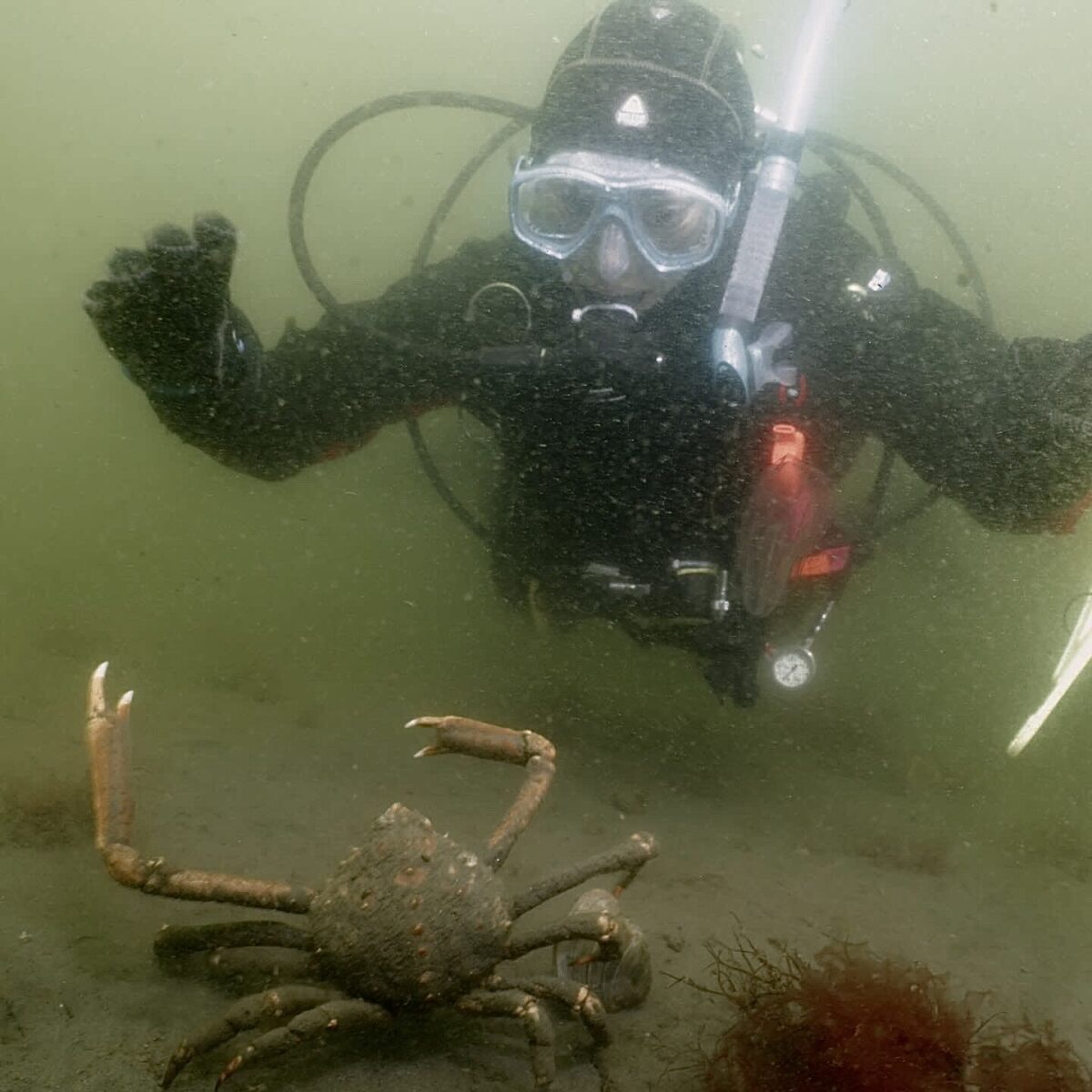I spent a week in New England learning lots of new skills! My visit started with a stop in Marion, Massachusetts, where I stayed with Vin, Dee, and Kim Malkoski. I joined Vin for a few days of fieldwork with the Massachusetts Division of Marine Fisheries (DMF). On the first day, I helped collect samples for a project monitoring contaminants in target species near a Superfund site (a site that has been highly polluted). The New Bedford harbor, located in an estuary, was a dumping ground for industrial waste from 1940-1970, becoming highly contaminated with polychlorinated biphenyls (PCBs). DMF deploys fish and lobster pots to monitor PCB levels, as a part of the larger monitoring and mitigation project in the area.

On the second day, I got out on the boat again, this time with Dr. Greg Skomal, a world-renowned white shark scientist! We deployed ten acoustic receiver buoys along the coast of Cape Cod. The buoys are able to detect when tagged white sharks (Carcharodon carcharias) swim within ~500m of them. They can also pick up signals from other species tagged with devices from the same company, so a whole conglomerate of scientists can utilize these sensors!
We also deployed a marker buoy that will later host a sensor that will broadcast white shark detections in real-time on an app, Sharktivity, developed by the Atlantic White Shark Conservancy. The white shark population in Cape Cod has grown exponentially in the past few decades, now reaching around 700 individuals and counting. The reason for this shark boom is a conservation success story. With the implementation of the Marine Mammal Protection Act, the gray seal population (white shark prey) has recovered after being hunted to near extinction. The increase in both of these populations has created some complex relationships between the animals and human communities. Dr. Skomal’s work focuses on creating an understanding of white shark behavior and movement in order to inform management practices, including tools like Sharktivity, that encourage coexistence between humans and sharks.
As someone with little experience in fisheries management, I found it very interesting to learn more about the field and the range of projects the department works on. I also got to learn more about boating operations, including navigation.
My next stop was Kingston, RI where I got to visit my scholarship coordinator, Anya Hanson. Along with supporting me during my scholarship year, Anya is also the Diving Safety Officer at the University of Rhode Island (URI).

While I was there, I finished my drysuit certification, practiced some underwater photography skills, and even got to fly a drone!

I also got to learn about the many incredible research initiatives at URI, including research on the impacts of climate change on lobsters, and tuna aquaculture. Other highlights included a tour of the Endeavor, URI’s research vessel, exploring Rhode Island’s beaches, doing some gardening, and having a lemonade stand with Anya’s kids! I was only in New England for a week, but I learned so much (and had so much fun) in that short time!
Thank you to the Our World-Underwater Scholarship Society and our sponsor Rolex for making this scholarship experience possible. I would also like to thank Reef Photo and Video, Nauticam and Light and Motion for my underwater camera setup as well as Aqualung, Fourth Element, Suunto, Halcyon, and DUI for my diving equipment.